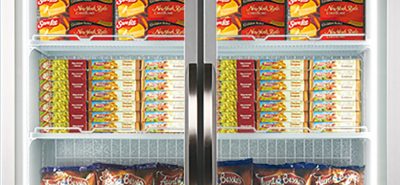Back Bar Chillers – Important information to consider when comparing energy labels
When you are comparing energy data on energy labels it is important to ensure that the products you are considering have been tested/classified to the same regulation standard as, if not, you are not comparing like with like.
The reason why other brands may choose to classify/test their products incorrectly is to show a higher energy rating so at first glance at the energy label it may look to be more energy efficient but please beware as this can be very misleading.
For example, compare the energy labels shown above for a Husky Back Bar chiller and another supplier’s equivalent model, most of us would believe that the model displaying a B energy rating is more energy efficient than the Husky label displaying a D energy rating. However, it is important not to take this B energy rating at face value and actually look at the energy consumption shown below the rating on the label as this provides you with the most reliable information on the energy consumption. In the examples above the Husky Back Bar chiller was tested as a beverage cooler, but the other supplier’s equivalent model was tested as a supermarket cabinet. An easy way for you to know that that the models have been tested to different test standards is to look at the data below the energy consumption on the labels as the data should be displayed in exactly the same format which you can see is not the case in the energy labels shown above.









